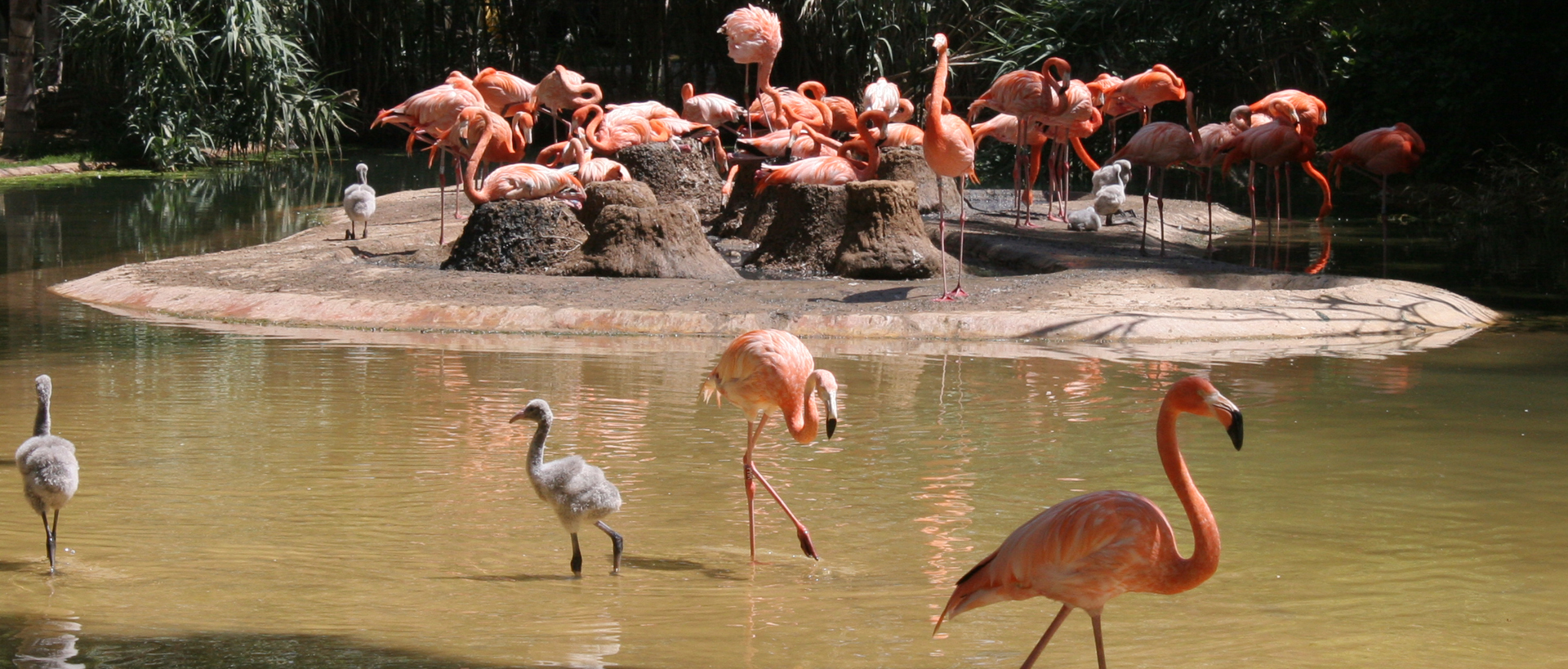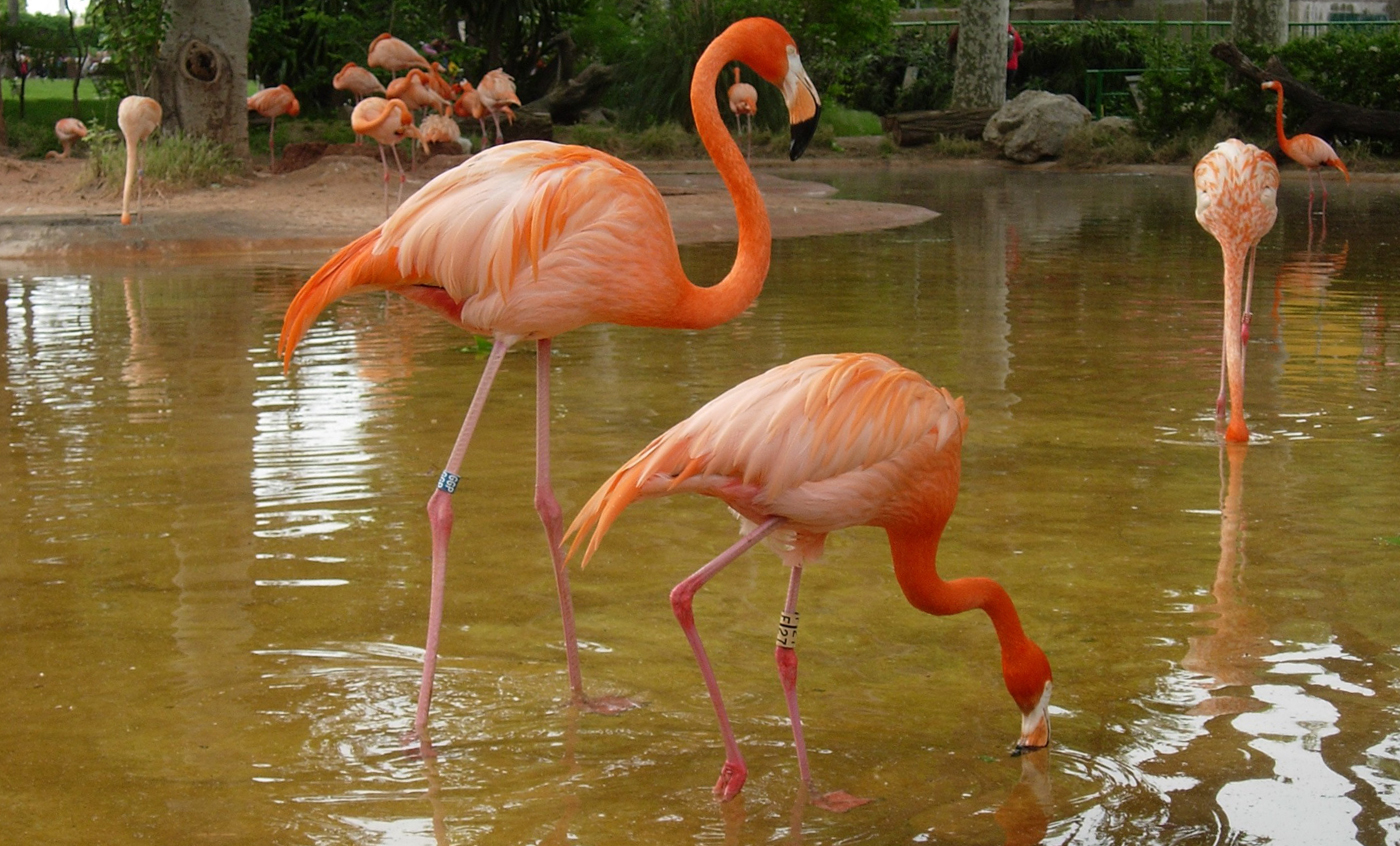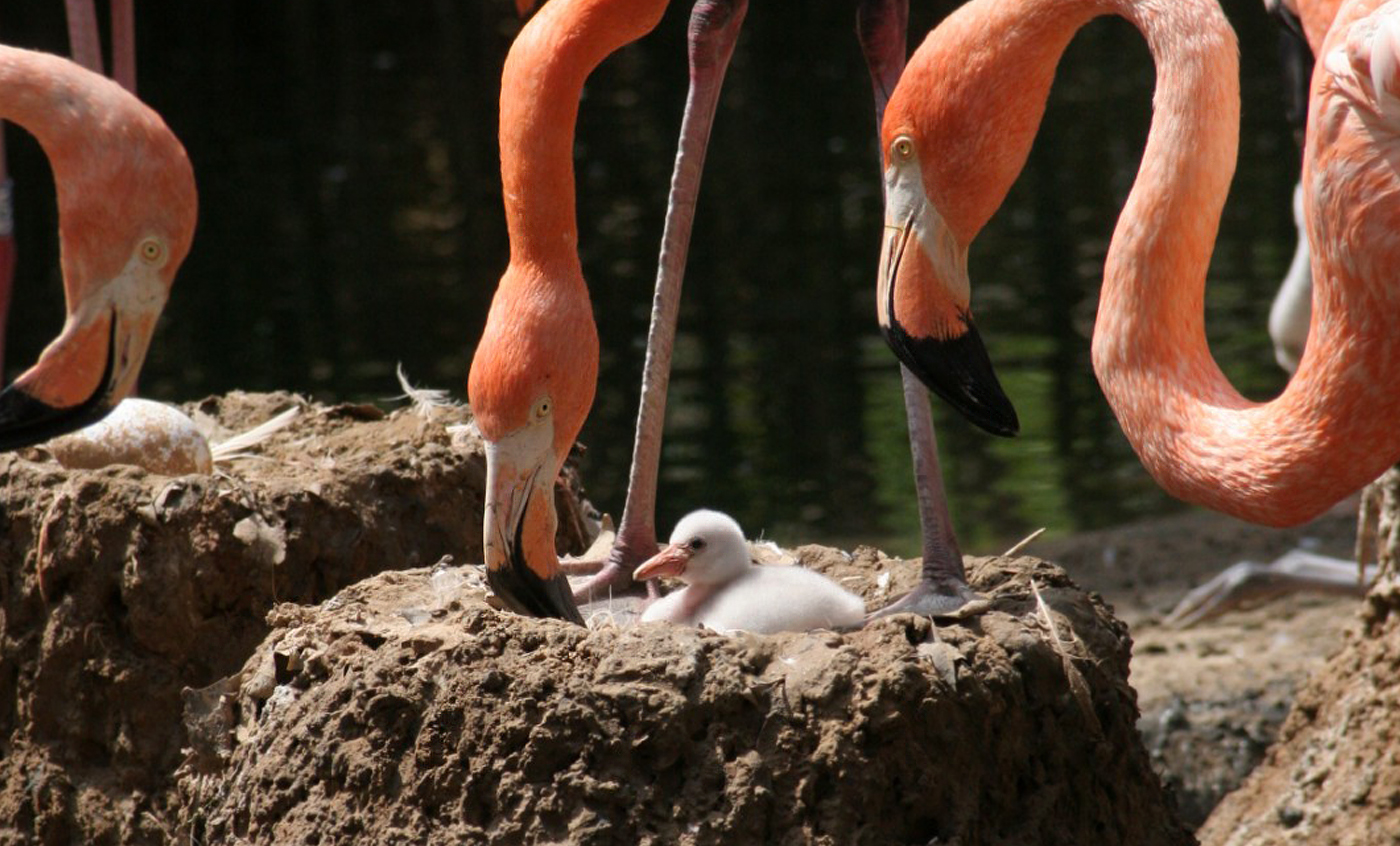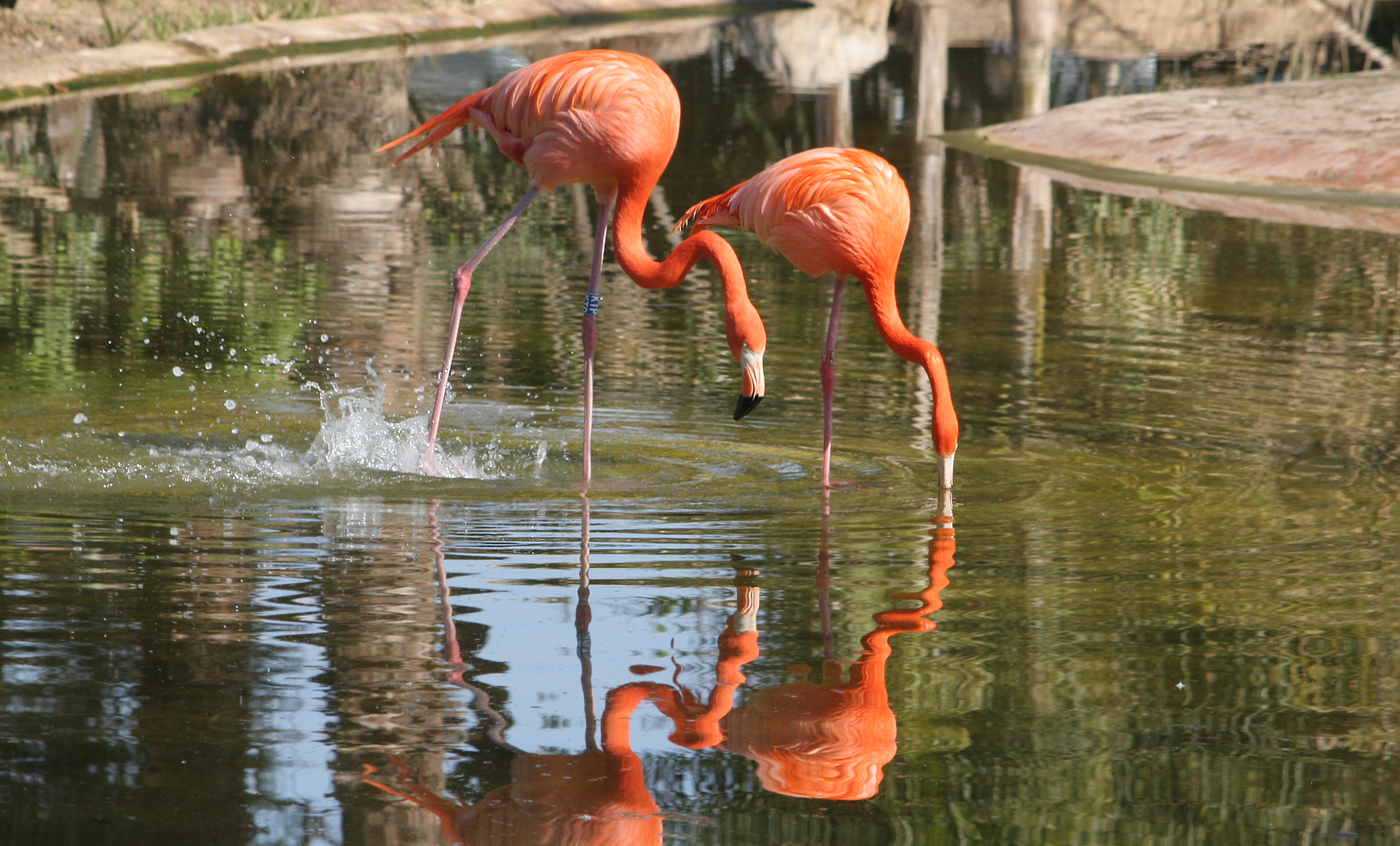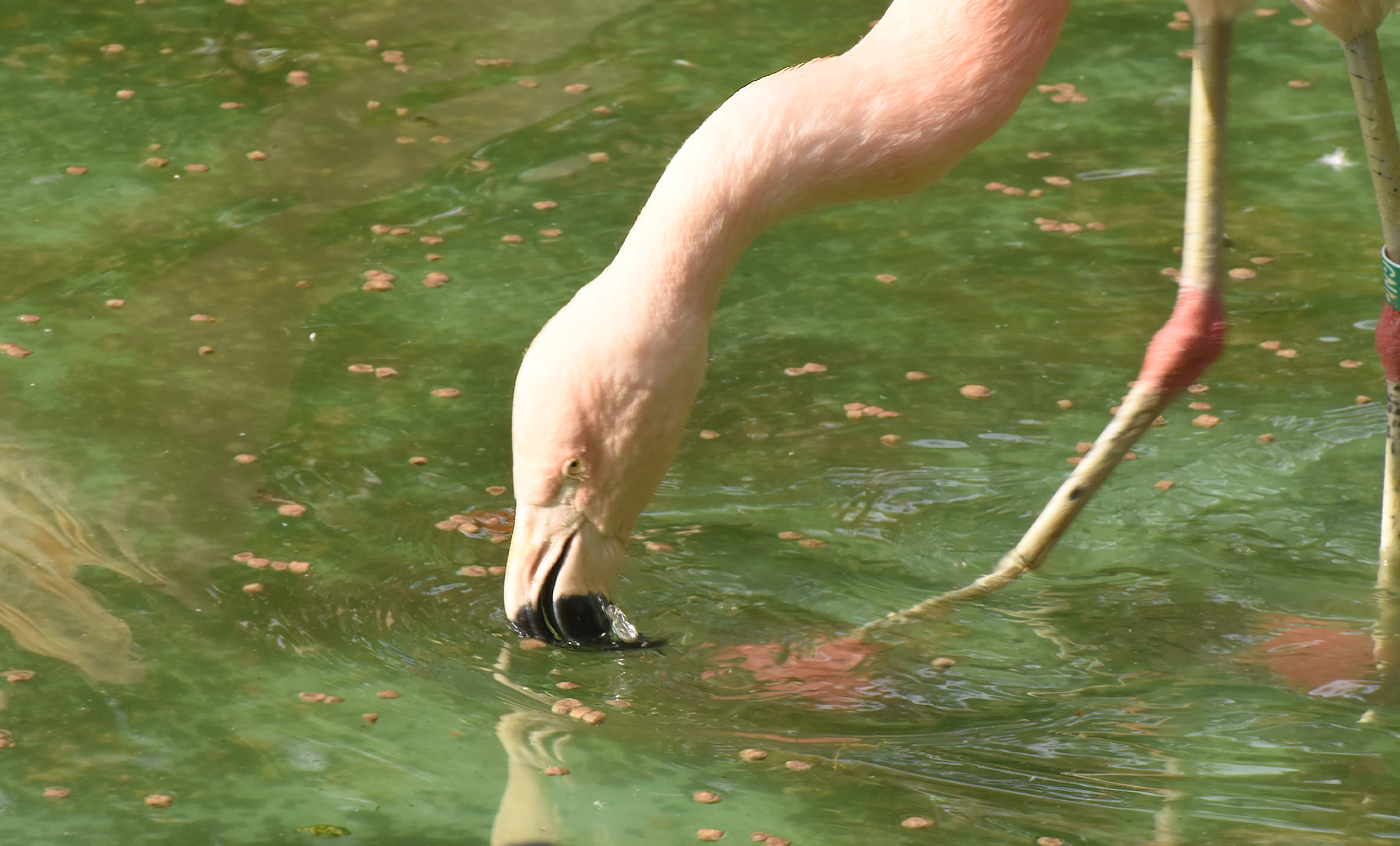American flamingo
This flamingo lives on the coast, salt marshes and lagoons in the islands of the Bahamas, Cuba, Haiti and the Dominican Republic and the Galapagos, as well as in Central America and the north of South America. It differs from the common and Chilean flamingos in that it has bright red plumage.
Although its numbers are still quite large - there are about 80-90,000 remaining - they are gradually decreasing due to the constant destruction of their environment.
Natural habit
Antilles, Yucatan Peninsula, northern Venezuela and Colombia and the Galapagos Islands.
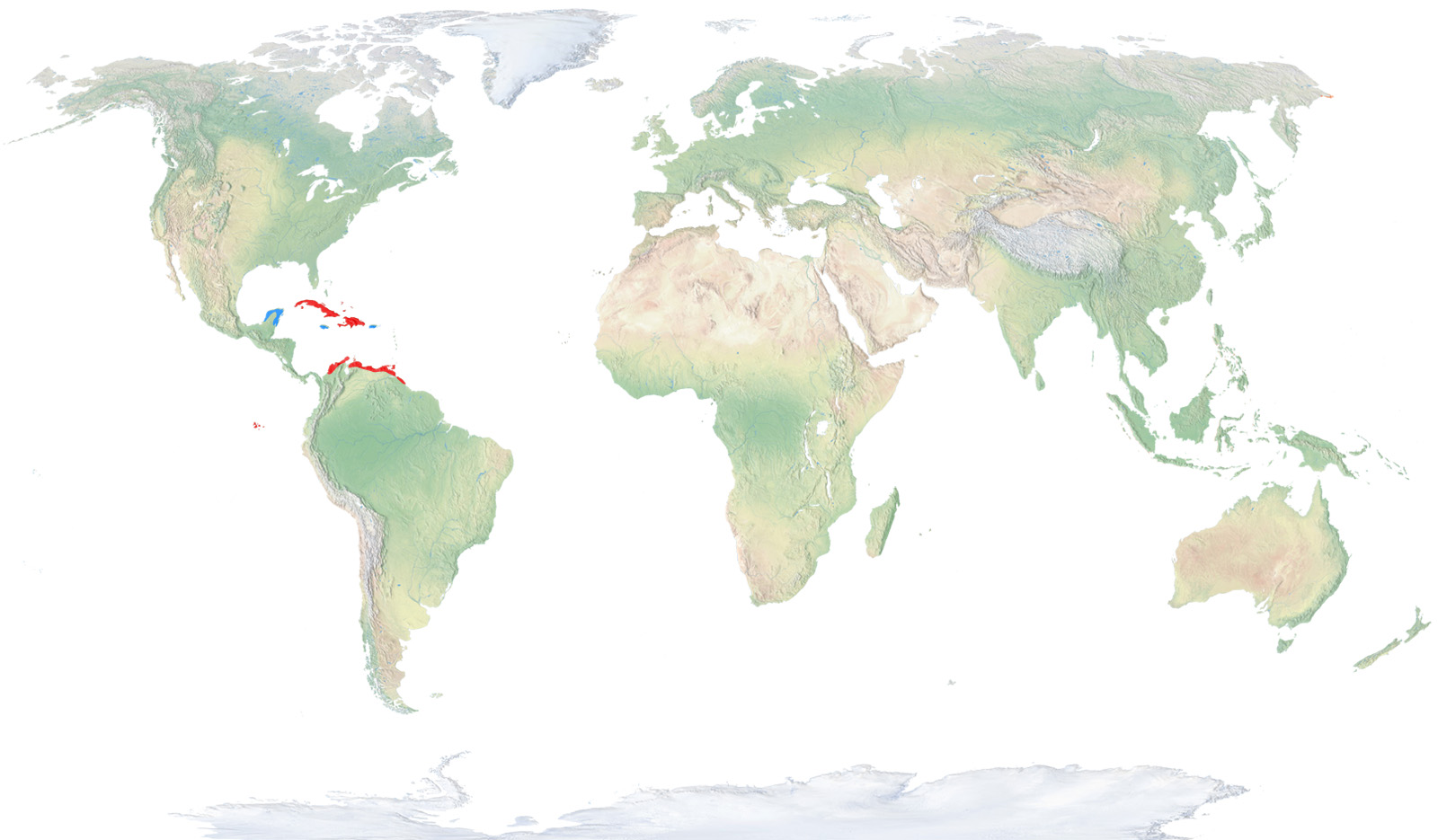
- Distribution / Resident
- Breeding
- Wintering
- Subspecies
Risk level
- Extint
- Extint in the wild
- Critically endangered
- In Danger
- Vulnerable
- Near threatened
- Minor concern
- Insufficient data
- Not evaluated
Taxonomy
Physical characteristics
Biology
Reproduction
Biology
They can be distinguished from the common and Chilean flamingos, very similar species that are easily confused with their American counterpart, due to the intense red coloured plumage. The plumage is different tones of pink, although the neck, breast and feathers covering the wings tend to be more colourful and intense, and the dorsal, shoulder and belly areas tend to be a bit paler and duller colour. It is impossible to tell males and females apart from their plumage, although females tend to be significantly smaller.
The American flamingo inhabits the coasts, swamps and salt lakes of the Bahamas, Cuba, Santa Domingo and the Galapagos, as well as the Yucatan, Central America and the north of South America.
Flamingos are filter feeders that eat small crustaceans and other microscopic invertebrates that live in water. The shape of the beak is adapted for this type of feeding: They fill their beaks with water and then expel it with the tongue, with the food retained in the small serrated plates in their upper jaw.
American flamingos nest in large colonies that are located on the shore or even in water, when it is shallow. This is possible because the nests are small mud constructions up to 50 cm high, with a slight depression at the top, where the egg is deposited and remains above the water level. After 28-30 days of incubation, a single baby is born, which will soon leave the nest to join the other chicks, watched over by a few adults in the colony.
A resident in its entire area of distribution, only a few cases of wandering are known in northernmost areas, such as southern Florida.
The main problem that American flamingos face is the growing destruction of their habitat. This species is protected by the Washington Convention, in appendix II. At present, the world population is estimated to broadly exceed 200,000 specimens, although specific isolated populations may be shrinking. The most conspicuous and odd population inhabits the Galapagos Islands, where they are stable partly because of the high degree of protection afforded animals there.



